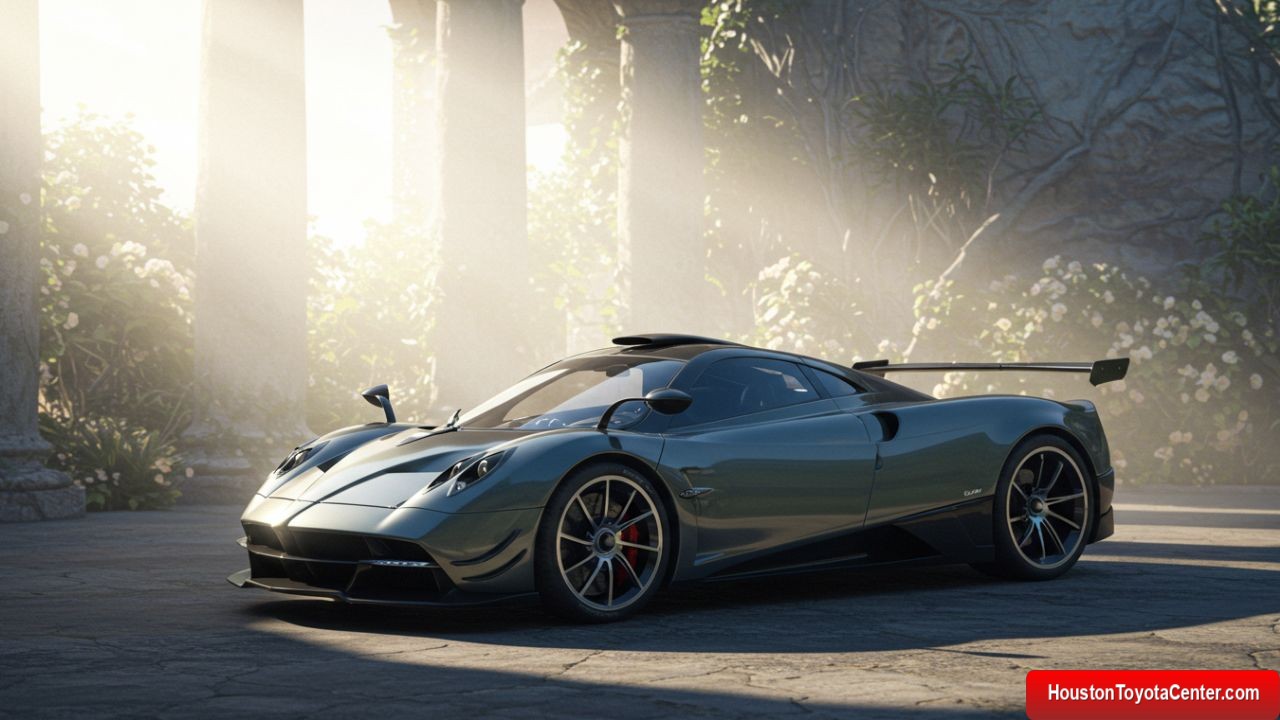The automotive world is no stranger to hypercars that push the boundaries of speed, technology, and design. Yet, few vehicles manage to transcend the realm of mere transportation to become rolling works of art. The Pagani Utopia is one such creation—a symphony of form, function, and emotion that redefines what a hypercar can be. From its sculpted bodywork to its meticulously crafted interior, every element of the Utopia reflects Horacio Pagani’s unwavering commitment to perfection. This article delves into the philosophy, engineering, and artistry behind the Utopia, exploring how it bridges the gap between human creativity and mechanical brilliance.
The Philosophy of Pagani: Where Art Meets Science
Pagani Automobili has always stood apart from its competitors. Founded by Horacio Pagani in 1992, the Italian marque is driven by a singular vision: to create cars that are not just fast or luxurious but emotional experiences. The Utopia, unveiled in 2022 as the successor to the Huayra, embodies this ethos. Unlike brands that prioritize raw power or lap times, Pagani focuses on harmony—balancing aesthetics, performance, and craftsmanship.
Horacio Pagani often references the Renaissance era, where artists like Leonardo da Vinci merged science and art. This philosophy is evident in the Utopia’s design, which avoids aggressive angles or superfluous elements in favor of timeless elegance. The car’s curves, proportions, and materials evoke a sense of permanence, as if it were sculpted rather than assembled.
Exterior Design: A Study in Aerodynamic Beauty
The Utopia’s exterior is a masterclass in functional artistry. Every vent, scoop, and contour serves a purpose, yet nothing feels contrived. Let’s break down its key design elements:
FREE: Quickly identify and understand problems with your vehicle 🚘
CLICK HERE1. Sculpted Silhouette
The Utopia’s profile is instantly recognizable, with a long hood, cab-rearward stance, and teardrop-shaped cockpit. Its dimensions (5,190 mm long, 2,135 mm wide) are bold but balanced, avoiding the visual heaviness of some rivals. The roofline flows seamlessly into the rear deck, creating a sense of motion even at a standstill.
2. Active Aerodynamics
Pagani’s expertise in aerodynamics shines through. The Utopia features active components that adjust in real time:
- Front Splitter: Extends at speed to increase downforce.
- Rear Wing: Retracts flush with the bodywork for reduced drag.
- Diffuser: Channels airflow to stabilize the car at high speeds.
Aerodynamic efficiency isn’t just about performance; it’s also about reducing turbulence and noise, ensuring a serene driving experience.
3. Materials and Finish
Pagani’s use of advanced composites is legendary. The Utopia’s chassis is built from Carbo-Titanium HP62 G2 and Carbo-Triax HP62, materials that combine carbon fiber’s lightness with titanium’s strength. The body panels are hand-painted in a multi-layer process that takes weeks to complete, resulting in a depth of color unmatched by mass-produced vehicles.
Interior: A Sanctuary of Craftsmanship
Step inside the Utopia, and you’re greeted by an environment that feels more like a haute couture atelier than a car cabin. Pagani’s interiors are renowned for their bespoke details, and the Utopia raises the bar:
1. Analog Elegance
In an age of digital overload, the Utopia’s dashboard is a tribute to analog craftsmanship. Switches, dials, and gauges are machined from aluminum and titanium, with finishes that mirror luxury watches. The exposed gear linkage, a Pagani signature, is a sculptural centerpiece.
2. Customization
Owners work directly with Pagani’s artisans to personalize every detail. Options include:
- Leathers: From semi-aniline hides to vintage-inspired patinas.
- Metals: Brushed titanium, gold accents, or Damascus steel.
- Embroidery: Hand-stitched motifs or monograms.
3. Ergonomics
Despite its focus on beauty, the Utopia doesn’t compromise on usability. The seats are tailored to the owner’s physique, while the steering wheel—crafted from carbon fiber and leather—places controls at your fingertips.
Engineering Excellence: The Heart of the Utopia
Beneath its artistic exterior lies a technical tour de force. The Utopia’s engineering is a blend of cutting-edge innovation and old-school passion:
1. Powertrain
At the heart of the Utopia is a 6.0-liter V12 twin-turbo engine developed by Mercedes-AMG. Tuned exclusively for Pagani, it delivers 852 hp and 1,100 Nm of torque. Paired with a 7-speed transversal gearbox, the Utopia accelerates from 0–60 mph in under 2.8 seconds, with a top speed exceeding 230 mph.
Powertrain Specifications
| Component | Specification |
|---|---|
| Engine | 6.0L AMG M158 V12 Twin-Turbo |
| Power | 852 hp @ 6,000 rpm |
| Torque | 1,100 Nm @ 2,800–5,900 rpm |
| Transmission | 7-speed automated manual |
| 0–60 mph | 2.8 seconds |
| Top Speed | 230+ mph |
2. Chassis and Suspension
The Utopia’s chassis is a monocoque design using Pagani’s proprietary alloys. Its suspension system—a double-wishbone setup with electronic dampers—adapts to driving conditions, offering both razor-sharp handling and ride comfort.
3. Weight Distribution
Pagani’s obsession with balance extends to weight distribution. The Utopia achieves a near-perfect 48:52 front-to-rear ratio, enhancing agility and stability.
The Sound of Passion: Acoustic Engineering
Pagani believes a hypercar should engage all senses, including hearing. The Utopia’s exhaust system is tuned to produce a mechanical symphony—a growl at low revs that crescendos into a metallic wail at redline. Engineers spent months refining the note, ensuring it evokes emotion without overwhelming the cabin.
Sustainability in a Hypercar World
While hypercars aren’t synonymous with eco-friendliness, Pagani has taken steps to reduce the Utopia’s environmental footprint:
- Lightweighting: Using composites cuts fuel consumption.
- Efficient Manufacturing: 75% of energy in Pagani’s factory comes from renewables.
- Longevity: Each Utopia is built to last decades, countering disposable culture.
The Pagani Utopia in Context: A Comparison
How does the Utopia stack up against its peers? Let’s examine key metrics:
Hypercar Comparison Table
| Model | Pagani Utopia | Koenigsegg Jesko | Bugatti Chiron |
|---|---|---|---|
| Engine | 6.0L V12 TT | 5.0L V8 TT | 8.0L W16 TT |
| Power (hp) | 852 | 1,600 | 1,500 |
| Weight (kg) | 1,280 | 1,420 | 1,996 |
| Power-to-Weight | 0.67 hp/kg | 1.13 hp/kg | 0.75 hp/kg |
| Top Speed (mph) | 230+ | 300+ | 261 |
| Price (USD) | ~$2.5M | ~$3M | ~$3.3M |
While the Utopia trails in sheer power, it excels in driver engagement and exclusivity. Only 99 units will be built, each a unique expression of its owner’s taste.
Conclusion: The Utopia as a Cultural Artifact
The Pagani Utopia is more than a car—it’s a statement. In a world racing toward autonomy and electrification, it celebrates the joy of driving, the beauty of craftsmanship, and the irreplaceable human touch. Horacio Pagani once said, “We are not building cars; we are creating dreams.” With the Utopia, that dream is tangible, a reminder that even in the digital age, artistry and passion still have a place on the open road.
As the automotive landscape evolves, the Utopia stands as a testament to what happens when genius refuses to compromise. It is, in every sense, a utopia on wheels.


Leave a Reply